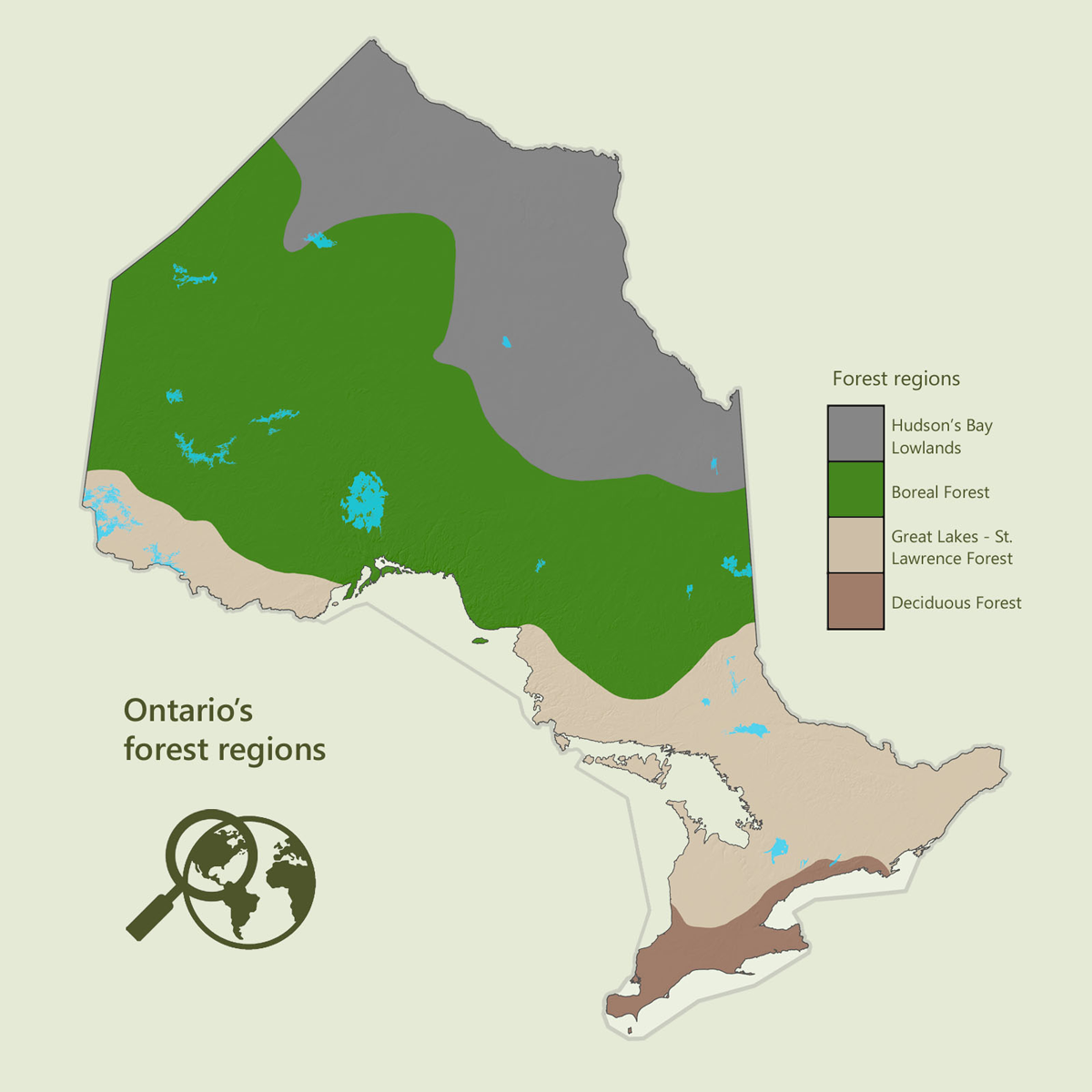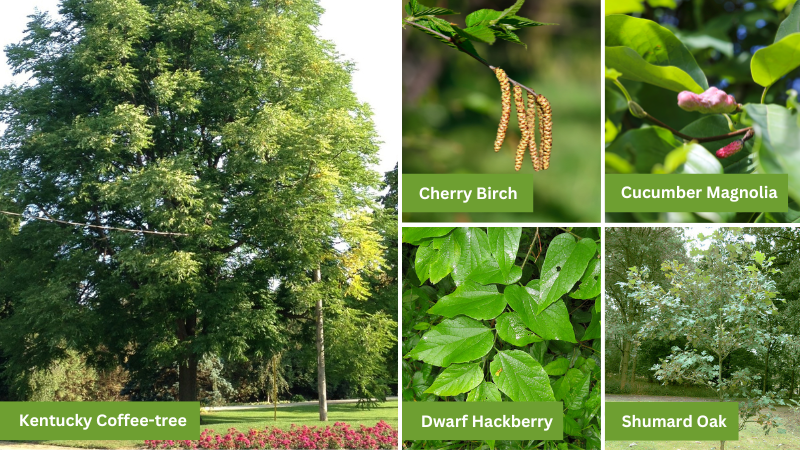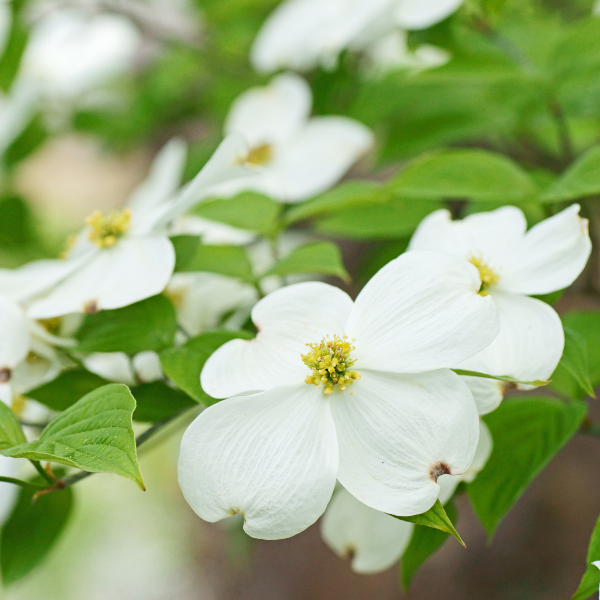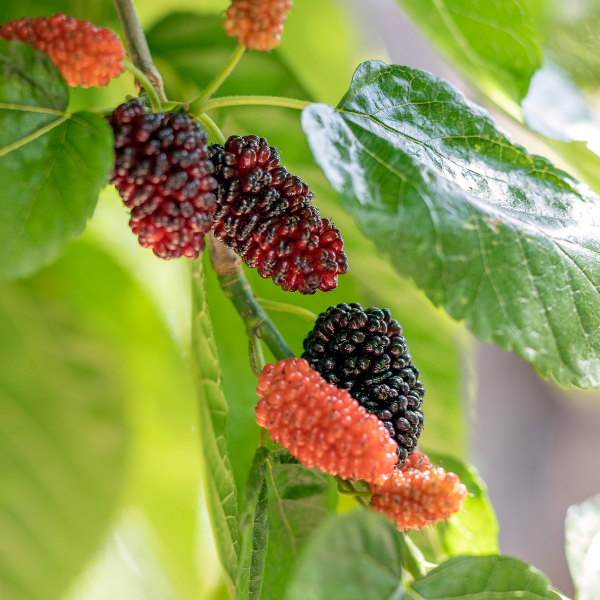What does ‘Species At Risk’ mean?
The term Species At Risk (SAR) is defined as “likely to become endangered if nothing is done to reverse the factors leading to its extirpation or extinction”. There are three categories of SAR: endangered (facing imminent extirpation or extinction), threatened (likely to become endangered if action is not taken) and special concern (may become threatened or endangered). Tree species become at risk through habitat loss, vulnerability to invasive insects, disease, hybridization or a combination of these factors.
Habitat loss
While Ontario as a whole is 66% forested and has about 4.8 hectares of forest for every citizen, tree cover is not equally dispersed across all regions of Ontario. Most of Ontario’s forested regions are found north of the GTA. While habitat has been lost in central and northern regions of Ontario, forests in those areas are still vast and mostly intact because of lower human population density and development.
South-western Ontario is a very different story. Also known as the Carolinian Zone, this unique region has the warmest summers and mildest winters in Ontario and the deciduous forest of this region has a greater number of both flora and fauna species than any other ecosystem in Canada. But this region is also highly fragmented by dense, sprawling urban areas and farmland. As such, much of the original forested areas have been lost, which puts a lot of pressure on some tree species.

Carolinian trees species that are at risk primarily due to habitat loss are Cherry Birch (Betula lenta), Cucumber Magnolia (Magnolia acuminata), Dwarf Hackberry (Celtis tenuifolia) and Shumard Oak (Quercus shumardii). Another SAR tree found in the Carolinian Zone, which is offered by LEAF, is Kentucky Coffee-tree (Gymnocladus dioicus). This tree is threatened due to lack of suitable natural habitat and difficulties with natural reproduction, but they are easy to grow in controlled settings and are hardy enough to thrive in both colder climates and urban areas. You will often see them growing in parks and as street trees.

Invasive insects, disease, hybridization
Other serious threats to native trees in Ontario is vulnerability to invasive insects and pathogens and hybridization with non-native trees species. The following are at-risk due to one or more of these threats:

Ashes (Fraxinus spp)
Various ash tree species are commonly found in both natural and urban areas throughout Ontario but their numbers have been severely reduced in recent years due to the invasive Emerald Ash Borer (EAB) insect. Black Ash (Fraxinus nigra) and Blue Ash (Fraxinus quadrangulata) are now officially SAR, but White Ash (Fraxinus americana), Red or Green Ash (Fraxinus pennsylvanica) and Pumpkin Ash (Fraxinus profunda) are also vulnerable to EAB. Blue Ash is particularly vulnerable because it is a Carolinian species that also suffers from habitat loss.

Butternut (Juglans cinerea)
A cousin of Black Walnut, Buttenrut suffers from Butternut Canker, a quickly spreading fungal disease that can kill a tree within a few years. The origin of this disease is undetermined, but scientists believe it spread from Asia to North America before the 1960s. Butternuts can still be found in the GTA, including at Wychwood Barns Park, where LEAF often leads tree tours.

Eastern Flowering Dogwood (Cornus Florida)
Eastern Flowering Dogwood is highly susceptible to dogwood anthracnose foliar disease, which attacks the leaves first and then the twigs and trunk of the tree. This disease originated in Asia and was first detected in Ontario in 1998. The mortality rate of infected trees is usually 25-75%. Luckily, other native dogwood species are not susceptible to this disease.

Red Mulberry (Morus Rubra)
Red Mulberry is threatened by several factors: it hybridizes with the invasive White Mulberry, has a limited habitat type that has become rare in Southern Ontario due to habitat loss, responds poorly to encroachment of invasive plant species and is susceptible to diseases that weaken the trees. As a result, there are now only a few hundred pure Red Mulberry trees left in Ontario.
Back from the brink?
A discussion on endangered native trees is not complete without the American Chestnut (Castanea dentata). This tree was once common throughout the forests of Eastern North America until Chestnut Blight was accidentally introduced from Asia in the early 1900s. Within a few decades, American Chestnut populations collapsed. Fortunately, the disease only attacks the top growth of mature trees, which allows trees that die back to regrow from the roots. And since only mature trees are attacked, some trees are able to mature just enough to produce chestnuts before dying back, thus preventing the complete extinction of the species.
But there is cautious optimism that American Chestnut may be due for a big comeback. In both Ontario and in the United States, work is being done to breed blight-resistant trees with a resistance-breeding program by the Canadian Chestnut Council and a genetic modification program at State University of New York College of Environmental Science and Forestry. With a lot of hard work and some luck, maybe we will see American Chestnuts in our urban forests again one day soon!

What you can do
Despite the trouble facing these 11 species, there is action you can take to help all our native trees – introduce native trees to your yard! Doing so will help stabilize the populations of individual tree species as well as help preserve the natural biodiversity of the urban forest. You can learn more about how planting native trees helps the urban forest here.
Plant for less through our subsidized Backyard Tree Planting Program! Check out our Homeowners page to get started on tree planting and our Shrubs, Garden Kits and Pawpaws page to order shrubs.
Justin Lewis is the Marketing and Communications Lead at LEAF.
LEAF offers a subsidized Backyard Tree Planting Program for private property. The program is supported by the City of Toronto, the Regional Municipality of York, the City of Markham, the Town of Newmarket, the Regional Municipality of Durham, the Town of Ajax, the Township of Brock, the Municipality of Clarington, the City of Oshawa, the City of Pickering, the Township of Scugog, the Town of Whitby, Ontario Power Generation and the Ontario Trillium Foundation.
